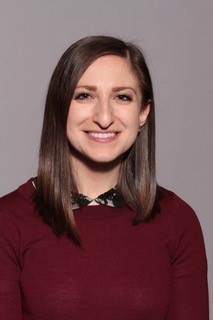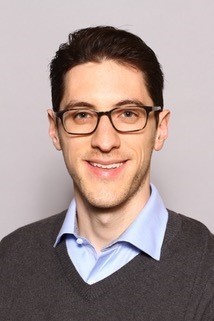Since as early as the 1880s, psychologists studying human memory generated “forgetting curves” which attempt to illustrate memory retention over time. It is thought that adults retain less than 30% of lecture-based content which diminishes over time, and yet this is still a commonly used platform for teaching in medical education. At my institution, our radiology residents receive nearly two hours of dedicated teaching each day, at least half of which is lecture-based didactics. I vividly remember sitting through those 45-minute lectures as a resident, often after lunch, struggling to pry my eyes open.
Modern medical school teaching techniques often include flipped classrooms and team-based learning. The return to lecture-based conferences in residency understandably feels counterintuitive, inefficient and ineffective relative to these more active learning models. Not only this, but the practice of medicine involves more than being able to pass multiple-choice board exams. It entails being able to recognize, analyze and formulate a plan based upon the information presented, a skill not easily developed with lectures.
Although we are fortunate to have so many passionate and talented teachers in medical education, there are several barriers to revamping “tried and true” didactic curricula including fear of change, perception of reduced transmission of information with active learning techniques, increased time and energy needed to revamp old or create new content, and lack of buy-in from faculty and other stakeholders.
However, it can be done! Below, we articulate four steps any program can take to revitalize lifeless didactic-based curricula.
- Obtain data
Before initiating a drastic change to any curriculum, it is worth performing a needs assessment, such as a survey or a focus group of key stakeholders including the residents and teaching faculty. With this data, your program can identify strengths and gaps in your curriculum and areas of professional growth for educators. From there, you can determine which changes should take priority.
- Make change easy
After deciding to revamp your curriculum, you will need to find ways to make this change easy on your faculty. Common roadblocks include time shortage, lack of prior knowledge in alternative teaching styles and, finally, fear of using new tools, such as audience response systems.
One way to address time shortages is to obtain buy-in from stakeholders, such as the Program Director, Vice Chair of Education (if your department has one) and the Chair. Post-graduate programs rely heavily upon their faculty to teach their trainees. If their trainees are unhappy and/or not learning effectively, this is a failure of the program and the administration. At many institutions, faculty that are involved in resident education qualify for academic days – time during the work week that can be used to create or revamp teaching content.
To address faculty discomfort and lack of prior knowledge in these alternative teaching styles, one option is to create a “menu” of options for innovative and engaging teaching techniques and provide example templates that can be easily selected from and followed. Some ideas are listed below:
- Think Pair Share – allowing learners time to formulate their own ideas/answers to thought provoking questions, share these ideas with fellow learners, then finally the rest of the classroom
- Peer Teaching – allowing a learner expert to instruct a learner novice
- Team Based Learning – forming small groups of learners to facilitate more efficient learning
- Audience Response Systems – electronic response systems with imbedded questions
- Individual and team-based case-based sessions
- Standard case presentations (progressive refinement: offering more and more information as the case unfolds and which simulates evolution of clinical cases in real life.
- Inverse case presentations (start with the diagnosis and work backwards, having trainees describe the typical patient history and workup).
- Flipped classroom – Pre-class assignment provides background knowledge which allows for more in-depth discussion and application of knowledge subsequently in the classroom
- pre-recorded mini-lecture
- self-guided PowerPoint
- article or website “pre-reading”
- Gamification (e.g. Jeopardy, team-based competitions)
You most likely already have some faculty in your program utilizing some of these models – use them! Invite them to give short faculty-development sessions sharing what they do and how they do it.
- Provide technical support
Several of the above techniques require the use of new technology, such as audience response systems (e.g. Nearpod or PollEv) or pre-recording lectures for a flipped classroom (e.g. PowerPoint or Camtasia). Some tools may have free versions or free institutional access, while some may be associated with additional cost. It may be helpful to contact your institution’s library to find out if your program has access to these or other comparable tools.
Identify a faculty member or motivated trainee to learn the program and create “how-to” guides to show others step-by-step how to utilize these tools (for example, see Shanna’s NearPod Demo created with the Brigham Education Institute). Ask your “experts” to provide occasional short “office hours” or faculty development sessions to show others how use these tools.
- Give props!
Transitioning curricula will take time and energy, so be sure to commend your faculty on their hard work! Obtain resident feedback (we use a QR code linked to a 3 question conference evaluation for daily feedback) so you can provide both positive and formative feedback to the faculty (not to mention identifying the superstar faculty that might be willing to assist with some of the above steps). If you don’t already, consider instituting a faculty educator of the year award.
Which techniques have you tried in attempting to revitalize tired curriculum? What has worked for your program? Join the discussion by commenting below!
Did you know that the Harvard Macy Institute Community Blog has had more than 165 posts? Previous blog posts have explored topics including global health and medical education, bridging leaders, and peer instruction.
Author BIO

Shanna Matalon, MD (Program for Post-Graduate Trainees: Future Academic Clinician-Educators ’16) is an Abdominal Radiologist and an Associate Program Director of the Diagnostic Radiology Residency at Brigham and Women’s Hospital. Shanna’s areas of professional interest include gastrointestinal imaging and medical education, including development of innovative curricula and improving diversity and inclusion in academic radiology. Shanna can be followed on Twitter.

Matthew Abrams, MD is a Radiation Oncologist at Beth Israel Deaconess Medical Center and a current Rabkin Fellow in Medical Education. Matthew’s areas of professional interest include gastrointestinal radiation oncology and medical education including adult learning theory and curriculum reform. Matthew can be reached via email.
HMI Staff


